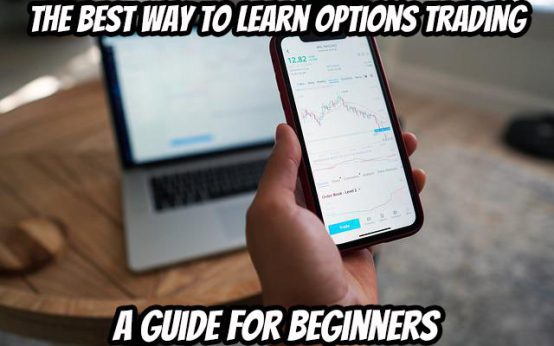Generating an income from trading options isn’t a new thing, and selling covered calls for income has been around for quite some time.
But as with many options trading strategies, there can be quite a bit of confusion how to trade them. From the terms used, to setting up and executing a trade. And then knowing exactly when a strategy like this is best used. It can all seem a bit confusing.
Before we begin though, if you haven’t already mastered the basics of trading options, you need to.
Without a solid foundational understanding of how options work, you’re going to be confused.
When it comes to trading online – if you’re confused, you’re probably going to lose money.
And if you’re selling covered calls for income, losing money would be very counterproductive 🙂
So if you’re unsure of how options work you can read the “how to” article I wrote. It’s called, “How to Read Options Chains – The Easiest Solution to Get Started Fast” . For more of a complete start up guide, read “How to Make Big Money Fast Trading Options”.
Covered Calls for Income – The Basics of Writing ‘Em

This isn’t the most complex option strategy out there. But there are a few things that you need to be aware of before you jump in with both feet.
The first is that your online broker will probably require you to put up a certain amount of cash. Usually more than just the initial deposit when you opened your account.
Once you’ve done that, you’re ready to get started.
And one quick housekeeping note before we jump into the steps here. When you hear the term “writing” or “selling” it means the same thing for options trading. So these terms can be used interchangeably.
Just so you know and aren’t left wondering where we switched gears…
Step 1 – Find the Correct Stock
The first step is to know when you would want to write covered calls for income.
And there are a couple different scenarios for when you would want to do this.
The first scenario is if you have some blue-chip stocks in a retirement account. The idea is that you don’t want to sell them, but would like to squeeze some more income out of them.
After all, if you can increase your annual returns, why wouldn’t you?
The second time that you’d consider trading covered calls is if you think the value of the stock will remain the same or only go up or down marginally from its current position.
If the stock goes up beyond the strike you sell your calls at, you’ll lose the stocks you purchased. This is getting “called out.” You’d still make money from the sale of the call options and some from the appreciation of the stock. But in placing the trade, your upside potential is limited.
If the stock drops in price, nothing happens other than you get to keep the premium you collected when you sold the call option and you’d now be the proud owner of a stock worth less than when you originally bought it. Lucky you.
Still could be worse….
Of course if the stock drops enough, you might have to come up with extra cash to cover the trade if you run into a margin call by your online broker.
But in order to determine which direction the stock is headed, you’ll have to determine the overall market, industry the stock is in, as well as look at the general trend of the stock itself.
A lot of traders will do this by using technical analysis to determine certain chart pattern formations that might indicate which direction a stock is headed.
This can either be done manually by looking at the charts yourself (see this book on typical stock chart patterns) or using an artificial intelligence software program to look for them and alert you.
Step 2 – Buy The Stock
Once you’ve found the stock you want to trade, you will need to buy shares in blocks 100 for standard option shares.
As each option contract typically controls 100 shares of the underlying security, you will need to purchase the stock in multiples of 100 so that when it comes time to selling your call contracts, the contracts you sell will cover the number of shares you bought.
As an example, if you bought 100 shares of Chevron, you’d then sell 1 call contract to cover those shares.
Simple, right?
Step 3 – Sell The Calls
Once you’ve got steps 1 & 2 out of the way your next step is to find a call to sell.
In this step, you want to choose a call that strikes a balance between the income it generates through the sale vs. how likely the stock is likely to rise above it.
Here’s where your skill at being able to spot charting patterns will come in handy again, as most traders will choose a strike that has historically been seen as a level of resistance.
You could also have a look at the option’s implied volatility (it’s Delta value) to get a rough idea as to the odds of the call ending up “in the money” at the time of expiration.
(And as you’d be selling the calls, you would NOT want the call to end up in the money. So you’d be looking for call strikes with a low Delta value.)
But the lower the value of Delta or the further away the strike price is from the current trading value of the stock, the less premium you will collect for selling the calls.
So you will get less money for having better odds of your trade working out.
The other factor in determining how much premium you receive is how far away the expiration date is.
A lot of people who are trying to trade covered calls for income will often trade either weekly or monthly contracts if they’re looking to generate income using this trading strategy.
Once you’ve done all that, you’re done!
Final Thoughts
 This is a great strategy to help bring in additional income. Especially if you’re trading it inside of a retirement account where you’re buying and holding stock for the long term. (You know, HODL).
This is a great strategy to help bring in additional income. Especially if you’re trading it inside of a retirement account where you’re buying and holding stock for the long term. (You know, HODL).
The only downside risk is that if the stock skyrockets in value, your upside potential is limited. Well, that and you’ll end up losing the stocks.
Which may or may not be a bad thing depending on your strategy.
On the downside, if the stock value falls you will have at least collected some money from selling the calls.
It might be a small consolation depending on how far the stock fell. But you’d be further ahead after collecting the premium than if you held the stock and watched it drop.
Something to think about.
If this all seems too complex and you can’t afford to open this kind of account, you can always sign up for our trade alerts service inside “The Empirical Collective” where we send out trade recommendations based on buying calls or puts. You can trade along with us and enjoy the fantastic returns we’ve experienced.
If that tickles your little fancy, you can sign up through the discounted link here.

 How to Paper Trade Options – Plus The 5 Best Free and Paid Trading Platforms
How to Paper Trade Options – Plus The 5 Best Free and Paid Trading Platforms  The Options Trading Mentor: Here’s How to Find the Best One for You
The Options Trading Mentor: Here’s How to Find the Best One for You  The Best Option Trading Success Stories from Average Traders Who Made Millions
The Best Option Trading Success Stories from Average Traders Who Made Millions  The Best Way to Learn Options Trading: A Guide for Beginners
The Best Way to Learn Options Trading: A Guide for Beginners  Here’s The Top WallStreetBets Sentiment Tool on The Market
Here’s The Top WallStreetBets Sentiment Tool on The Market  The Biggest and Most Painful WallStreetBets Losses in Trading History
The Biggest and Most Painful WallStreetBets Losses in Trading History